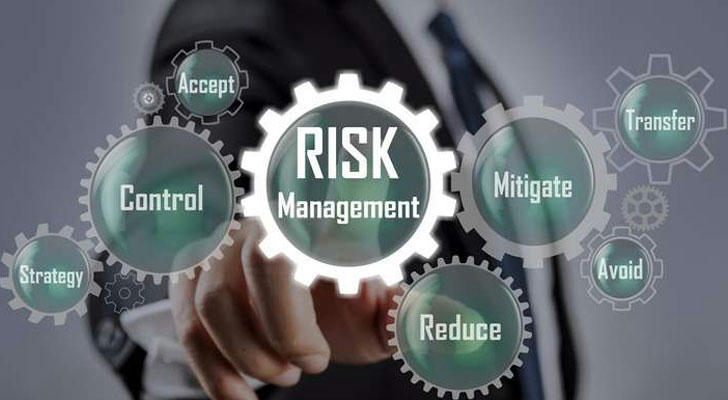When Black Swans Fly: How to Protect Your Wealth in an Uncertain World – A Risk Management Lesson for Everyone
Forecasting markets with precision is nearly impossible. History is littered with events that reshaped financial landscapes almost overnight—from the 2008 global crisis to geopolitical conflicts and pandemics. Such shocks highlight the limits of traditional risk models, which often fail when conditions change abruptly.
Rather than trying to predict these surprises, a stronger approach is to build systems designed to withstand them.

Why Extreme Events Can't Be Ignored
Financial crises rarely follow tidy rules. They often share three traits:
Low Predictability: Few foresaw global lockdowns in 2020 or rapid policy shifts in 2022.
Disproportionate Impact: Entire markets or industries can collapse in days.
Post-Event Clarity: Explanations appear convincing only after damage is done.
Research from the IMF shows tail-risk events (severe market moves > 3 standard deviations) have been occurring with greater frequency over the past two decades. Traditional diversification alone has not always shielded portfolios when correlations spike during crises.
Learning from Past Failures
1️⃣ Concentration Risk in Disguise
In 2011, after Japan's earthquake and tsunami, local investors saw value across sectors evaporate. Even those who avoided energy stocks suffered due to systemic country risk.
Key Point: True diversification requires spreading risk across geographies, currencies, and systems—not just sectors.
2️⃣ Liquidity Shortfalls Under Stress
During the 2020 crisis, corporate bond funds faced unexpected outflows. Investors sold at deep discounts to cover living costs. The U.S. Federal Reserve had to intervene to stabilize credit markets.
Key Point: Illiquid assets can magnify losses if forced sales occur during market stress.

3️⃣ Operational Dependence and Fragility
Businesses built around a single supplier, customer, or platform have faced catastrophic failures. A 2023 survey by McKinsey found that 45% of small businesses had no contingency plan for sudden platform policy changes.
Key Point: Resilient strategies anticipate and mitigate single points of failure.
A Structured Framework for Building Financial Resilience
✅ 1. Strengthen Core Stability
Emergency Reserves: Aim for 12–18 months of essential expenses in accessible accounts. In the 2023 banking scare, households with these buffers avoided liquidating investments at a loss.
Debt Management: Keep household debt-to-asset ratios below 50%. Housing crises show the danger of excessive leverage when property values fall.
✅ 2. Enhance Portfolio Flexibility
Layered Asset Approach:
Base Layer: Government bonds, inflation-linked securities, high-quality cash equivalents.
Growth Layer: Global index funds, emerging market exposure, diversified REITs.
Opportunity Layer: Precious metals, volatility-linked instruments, selective private equity.
Data from Vanguard suggests balanced global portfolios weather crises better than single-country allocations.
✅ 3. Use Counter-Cyclical and Non-Correlated Assets
Historical Perspective: Gold appreciated 25% during the 2008 crisis, while healthcare ETFs often outperformed during periods of economic contraction.
Consider allocations of 5–10% to assets with proven resilience during downturns.
✅ 4. Prioritize Scenario Planning
Stress Testing:
Simulate 30% equity declines combined with 10% bond losses.
Assess impact of losing employment income for a year.
According to Morningstar, investors who conduct regular scenario analysis adjust allocations more proactively, reducing panic-driven selling.

Additional Risk Management Strategies
Geographic Diversification: Allocate at least 20–30% of equities outside the home market to reduce exposure to localized shocks.
Dynamic Rebalancing: Review portfolios quarterly. Markets move quickly, and allocations drift over time.
Income Diversification: For entrepreneurs, reduce reliance on single platforms or clients.
Knowledge as a Defensive Asset
Financial crises consistently punish information gaps. Investors and business owners who study geopolitical trends, supply chains, and regulatory changes often adapt faster.
Examples include:
Investing in LNG shipping during the 2022 European energy crisis.
Transitioning restaurant operations to delivery platforms in 2020.
Action-Oriented Risk Checklist
Review asset allocation for true cross-system diversification.
Build liquidity buffers with target reserves covering a year of costs.
Add 5–10% exposure to counter-cyclical sectors.
Run worst-case simulations twice a year to identify gaps.
Continue learning through crisis case studies and financial history.
Final Reflection: Resilience Over Prediction
Financial success rarely hinges on predicting the exact timing of the next downturn. Instead, it relies on having a plan that survives multiple types of disruption.
Rather than asking, “What’s the most likely scenario?” consider: “Which plan holds up no matter what happens?”
Preparation isn't pessimism. It's the foundation for financial security in a world that refuses to be tamed.
